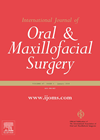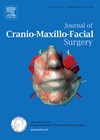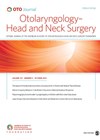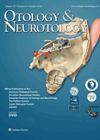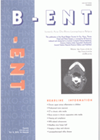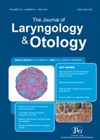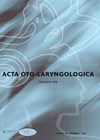
Journal Reviews
Surgical management of refractory osteoradionecrosis
This is a French single-centre, 10-year experience of 55 surgical resection and reconstruction procedures. They claim an overall effectiveness rate of 92.3%. A total of 36 segmental and 19 marginal mandibulectomies were performed. A variety of free flaps were used,...
Hierarchy of orthognathic surgical stability
This study was designed as “an overview” of secondary studies and analysed 15 articles. Two procedures were considered highly unstable: a bilateral sagittal split osteotomy for clockwise rotation of the mandible with bi-cortical screw rigid internal fixation, and posterior maxillary...
Antibiotic prophylaxis in otolaryngologic surgery. Less is better!
Jan/Feb 2020 Editor’s Choice is a review of antibiotic prophylaxis in ENT and OMF surgery. It is not the first systematic review and meta-analysis published in the last two years. If anyone else has been offered a “potentially career-altering opportunity”...
Using autologous blood to reduce postoperative infections
The removal of impacted wisdom teeth is a common surgical procedure with possible complications including postoperative bleeding and wound infection and alveolar osteitis. Preventing osteitis is dependent on retaining the blood clot in the socket with no infection. There are...
Elevated prevalence of late-onset dysphagia among head and neck cancer survivors and identifying risk factors
Dysphagia is one of the most common problems affecting head and neck cancer (HNC) survivors. There are few studies investigating late-onset dysphagia post-treatment. The authors set out to investigate the prevalence of dysphagia-related diagnoses and procedures five years’ post-treatment, changes...
Should we be doing earlier MRIs in sudden sensorineural hearing loss?
There is recognised variation between ENT departments in exact imaging protocols for the workup of idiopathic sudden sensorineural hearing loss (ISSNHL) but a routine MRI to exclude retrocochlear pathology is standard, usually following immediate treatment with oral +/- intratympanic steroids....
Acute ENT activity in a teaching hospital
This Belgian prospective audit attempted to provide justification for the provision of a 24-hour emergency service at a large 1038-bed teaching hospital (with 31 ENT consultants). The authors looked at a one-month period during which 190 patients were admitted. They...
ENT surgical training in Belgium
The authors aimed to identify strength and gaps in ENT training in Belgium through a national survey amongst ENT Belgian trainees. They attempted to contact 94 trainees, with a response rate of 59.5%. Of the respondents, 35.7% rated their level...
Risks of tracheostomy in head and neck cancer
Tracheostomy is associated with several complications, with rates quoted as high as 8-45%, including: bleeding; displacement; obstruction; surgical emphysema; pneumothorax; fistulae and failure to decannulate. There are now many studies that confirm the increased length of stay and complications of...
Rib grafts for mandibular reconstruction
Reconstruction of the mandible following ablation requires good bone stock to allow optimal function and the placement of dental implants. In the developed world, vascularised bony flaps are accepted as the gold standard but these may not be widely available...
How effective are our two-week-wait guidelines in picking up head and neck cancer?
With a 30% increase in the incidence of head and neck cancer since 1999 in the UK, it is important that the two-week wait referral guidelines safely encompass all risk factors but also render these urgent referrals based on signs...
Intratympanic steroids - to give or not to give?
The treatment of idiopathic sudden sensorineural hearing loss (ISSNHL) is controversial and different modes of steroids have been tried without any universal consensus. Various authors have reported combined oral and intratympanic steroid therapy in SSNHL, with consistent results in several...

